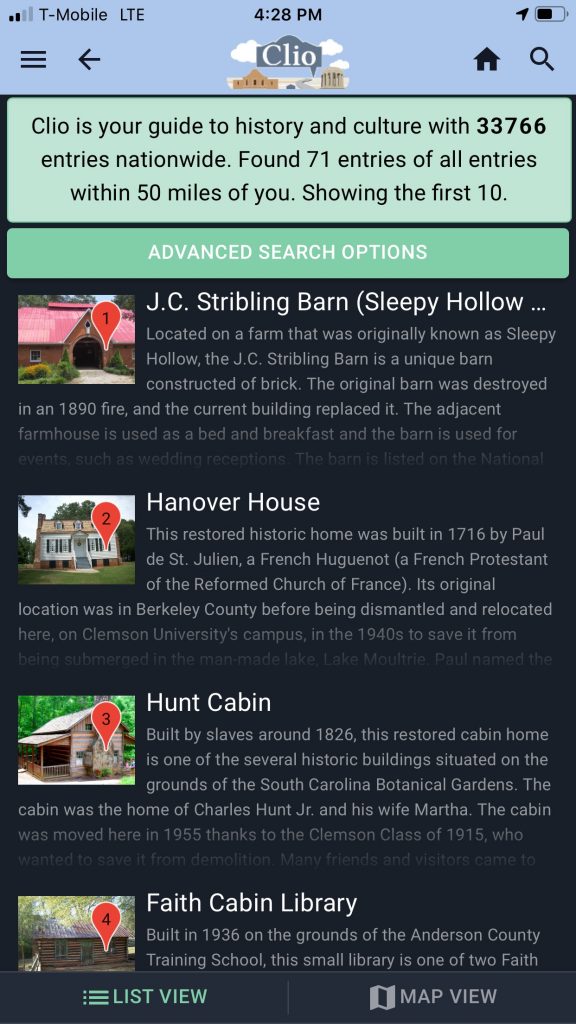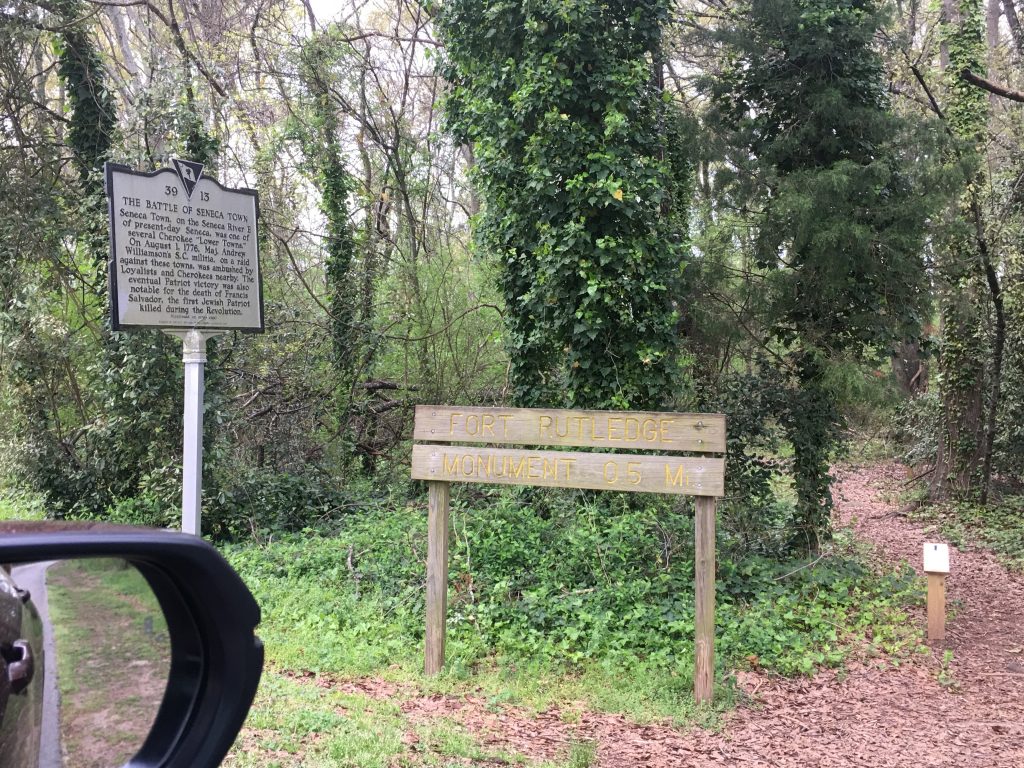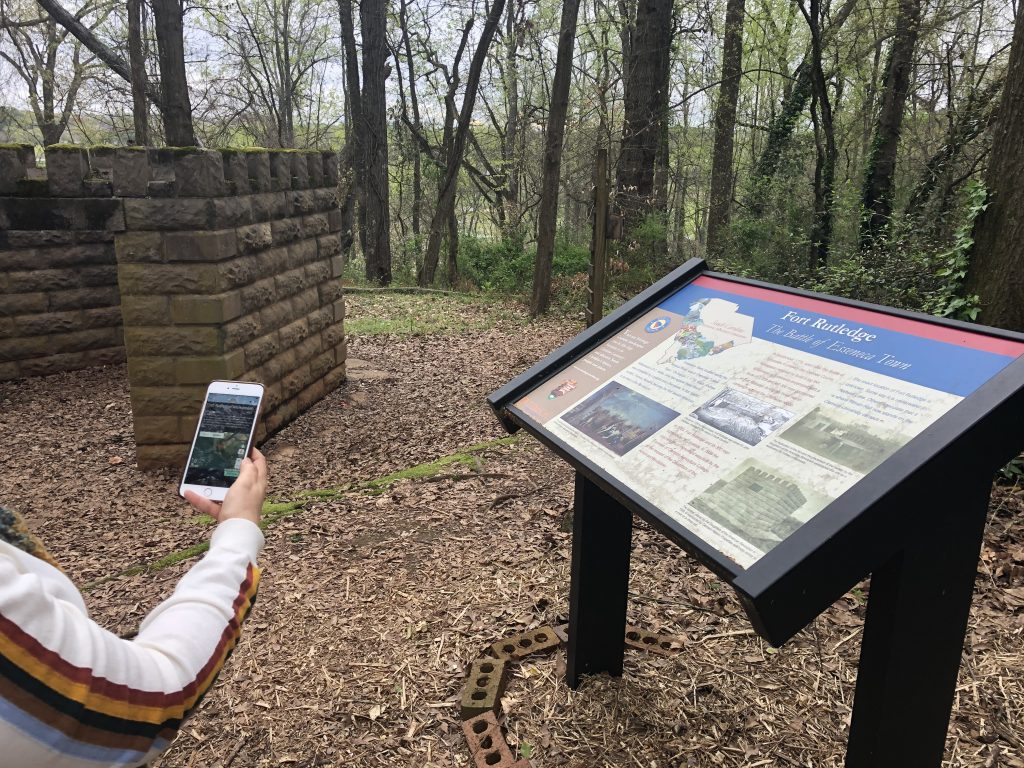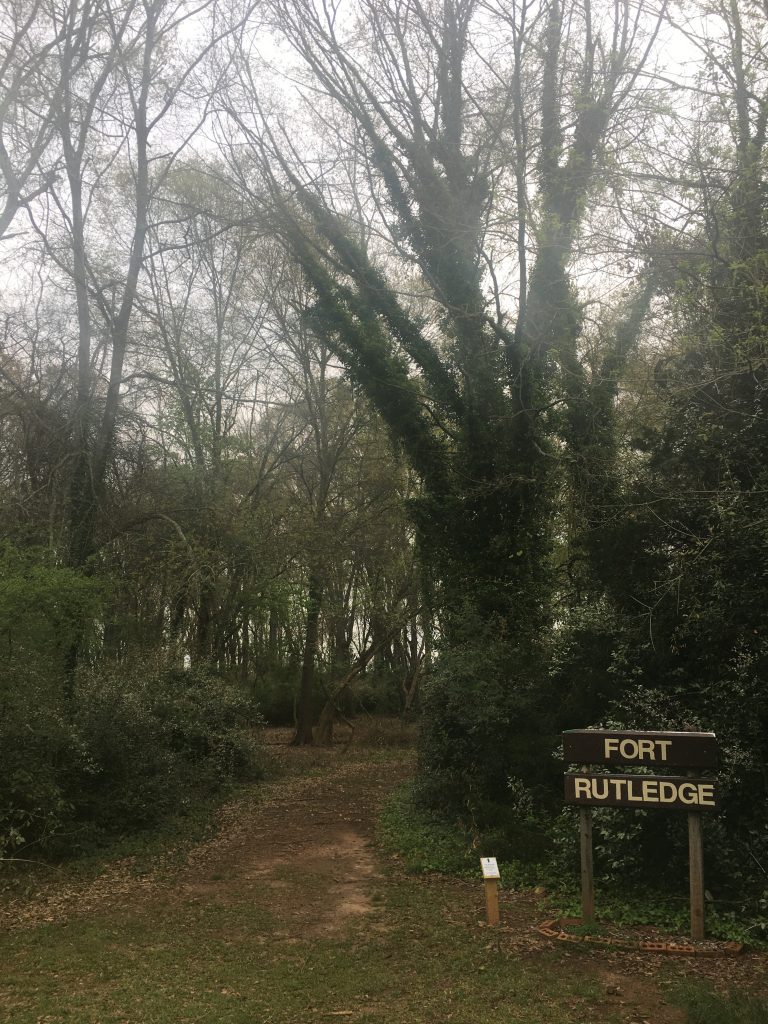The Clio
Urban humanist, Mark Tebeau has examined the possibilities that mobile technologies offer to curators and historians as they reach out to audiences, stating: “Although humanists, including oral historians, have embraced these technological trends, sometimes slowly, broad publics have incorporated mobile computing into their daily lives.” (25) With the use of GPS, mobile users can be guided to historical and cultural sites.
Introduction:
The Clio site was built to provide a mobile public history experience that connects users to local landscapes. The experience created by the Clio is one defined by the elements of connection and discovery. This app, is a collaboratively-built environment similar to the one described by Hart and Brownbill, creators of the World War I: Impact and Aftermath hybrid exhibit; one where “the experience has been designed as an integrated one, using handheld devices closely associated with in gallery media, objects, and text elements to enhance the narrative we are conveying to the visitor.” My experience with the Clio allowed me to better appreciate how mobile technologies can successfully engage users (students, tourists, historians, and the general public among them) with the public history in local regions, as well as around the world.
Features/Techniques:
Here are some of the app place-based techniques I explored as I used the Clio app to point me to historical sites in Clemson, South Carolina:
Auto-Search Based on User’s Geolocation:
Once the Clio app was downloaded and opened, my location was quickly picked up. The landing screen informed me of the number of entries found within a 50-mile radio of my location, and displayed the “first 10” sites near me. Users can opt for a “List View” or a “Map View” of the yielded site results (See Image 1). Right away, I could recognize some historical sites of interest and the distances from my house.
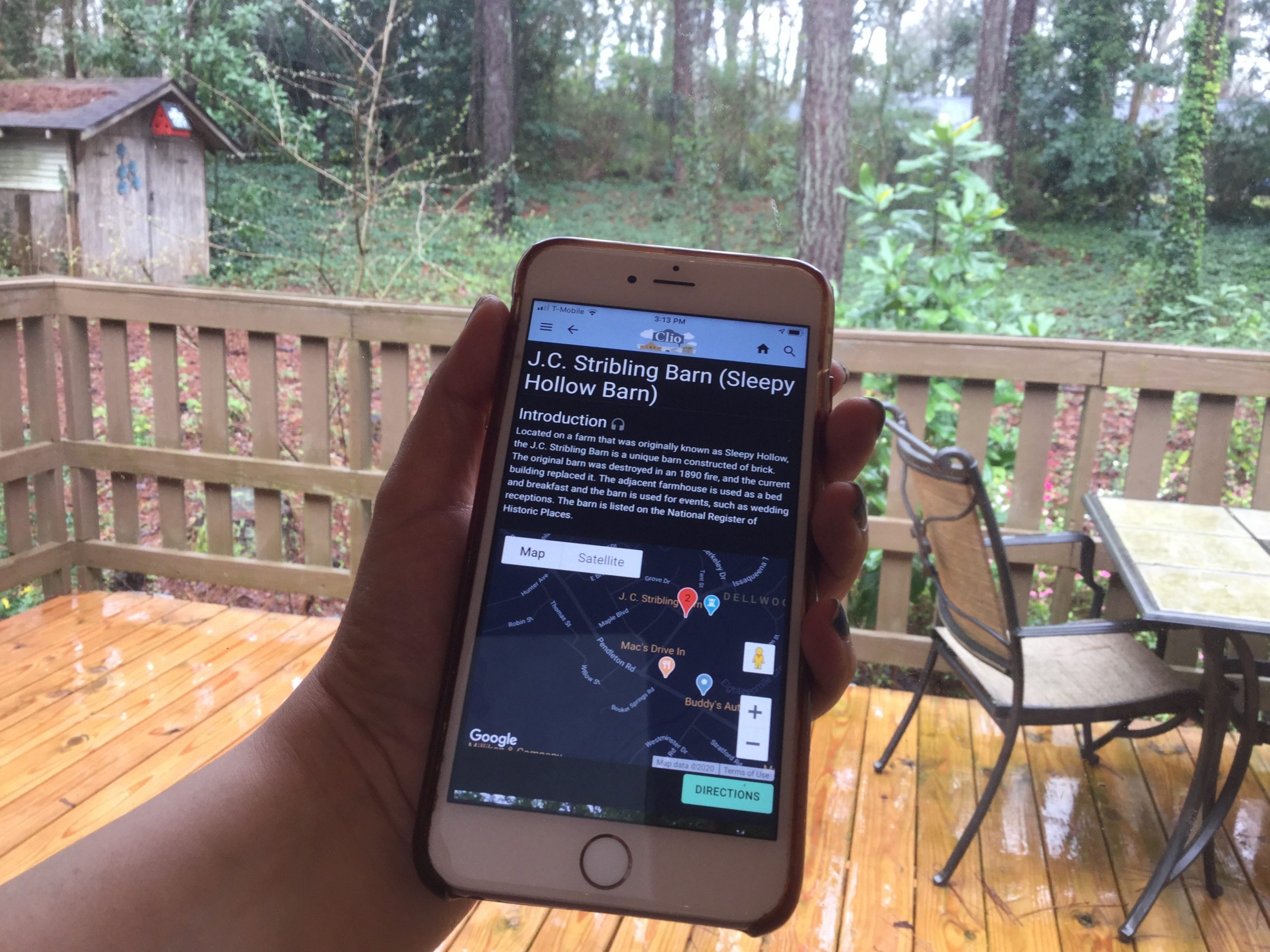
Before Arrival at Physical Sites:
At home, I viewed two entries that captured my interest, Fort Rutledge and the J.C. Stribling Barn. Before arriving to the physical site, the Clio app gave me instructions on how to get there and included Google street map and satellite views.
Upon Arrival at Physical Sites:
After selecting both sites on the app and upon arriving at each one physically , the app presented me with integrated content which included: background and context interpretive narratives, media elements (i.e. photographs of the site), and maps and navigation that geo-locate the historical object
Upon Return Home:
After coming back from my field trips, I went back to the app to check out more sources and links provided with each entry. Users could do further research with the inclusion of links to primary and secondary sources (i.e. websites and articles). Each entry page strikes the balance between concise and detailed stories that keeps users engaged with the content.
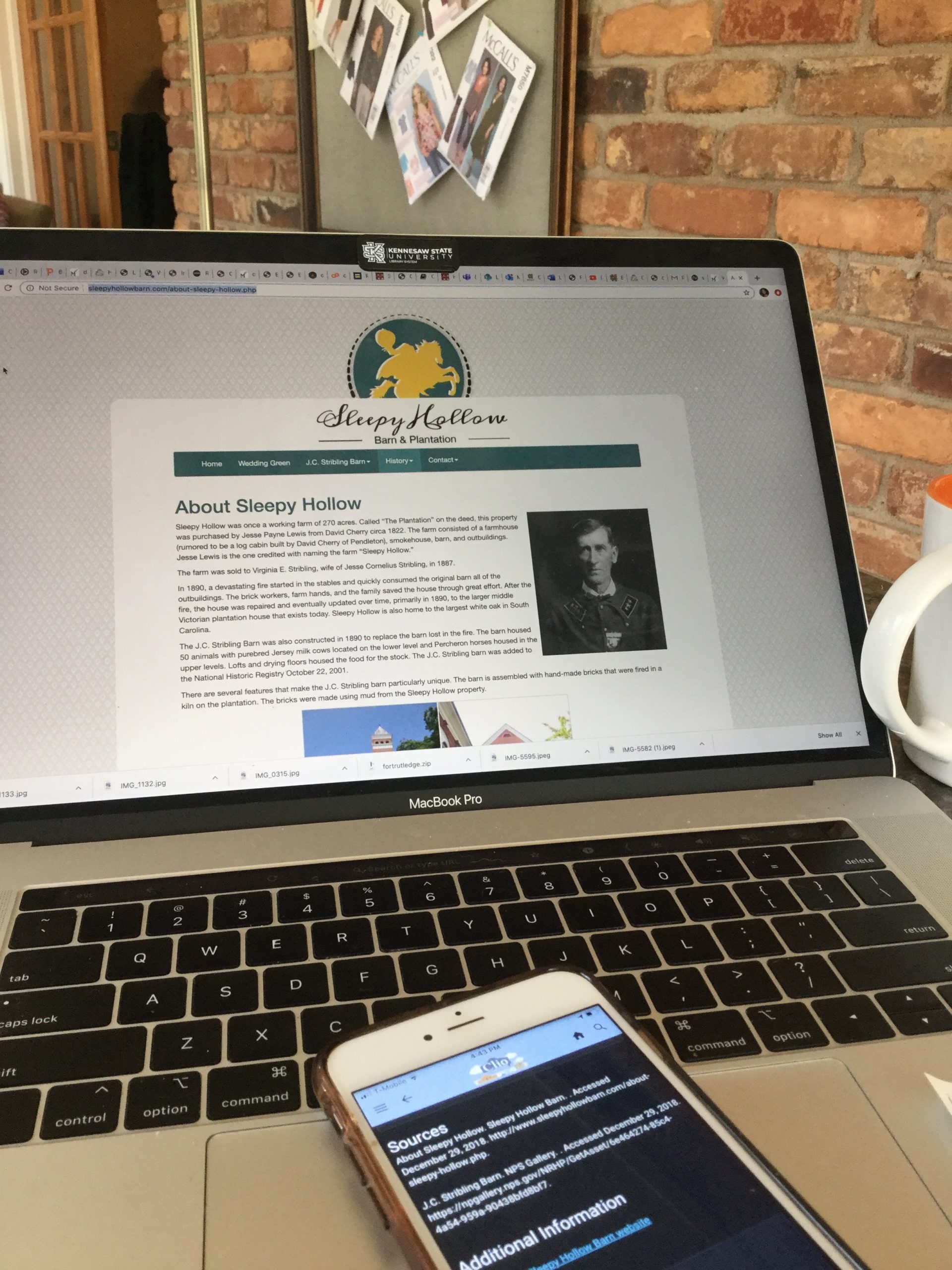
Levels of Engagement:
For Users:
From each entry page, users can interact with diverse source types, which continually keep them involved with the historical site and add layers of learning and meaning-creation. The walking tour option is effective in delineating and connecting historical content with the physical landscape and to contextualize the narrative.
For Entry Creators:
Although, many of the entries found in the Clio are been added by universities, libraries, and historical institutions, the public may engage in content creation. Among the activities, audience members (I believe with authentication) can perform the following: create new entries, edit existing entries, create walking tours or heritage trails centered around a site or a theme.
Possible Challenges:
Some of the sources provided were either out of date or have not been updated for a couple of years, which could be generate access or currency issues. But for the most part, I found this tool to have both pedagogical and entertaining values.
Another potential challenge could be access to bluetooth or mobile data, which could provide an obstacle to precise location trigger results. I did not encounter this challenge.
Overall:
The Clio app offers a compelling case for having these types of mobile public history technologies available to diverse users for meaning-making and for establishing landscape-content relations. Their About page describes the great potential and ambition of this app: “Clio allows scholars and their students to publish humanities scholarship using an innovative digital format that will instantly reach a broad audience in ways that cannot be replicated by traditional forms of publishing.” For users, such as students, to be able to contribute to a culture of open access, while connecting their sense of the past with their sense of place, is a very powerful thing.
Sources:
Hart, T. and Brownbill, J. “World War One: Love and Sorrow – A hybrid exhibition mobile experience.” In Museums and the Web Asia 2014, N. Proctor & R. Cherry (eds). Silver Spring, MD: Museums and the Web. Published September 19, 2014.
Tebeau, M. (2013). Listening to the city: Oral history and place in the digital era. The Oral History Review, 40(1), 25-35.
